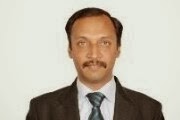The chicken and egg problem of economic development and corruption.
Mohamed Bouazizi was a fruit vendor in Tunisia. On 17
December 2010, he set himself on fire in protest against unjust behaviour and
corruption. What followed toppled at least four entrenched dictatorships—Egypt, Libya,
Yemen and, of course, Tunisia—and triggered massive protests in more than 18
countries against autocracy and human rights violations. Year 2011 was marked by
massive movements against corruption across the globe. India too saw its share
of protests in 2011 with Anna Hazare’s fast and subsequent arrest becoming the
rallying point of this movement.
By and large developed countries are perceived to have lower
levels of corruption than developing countries, though the developed world has
seen its share of scandals and shaming—the IRS scandal in the US, the Lagarde
List in Greece, the phone-hacking controversy in the UK, and the series of
corruption allegations that led to Italy’s setting up the National
Anti-Corruption Authority.[ii]
Chart 1 below reproduced from
Transparency International provides intuitive evidence of the possible link
between economic development and level of corruption. The correlation between
the Corruption Perception Index (Transparency International) and per capita GDP
(IMF) in 2012 turns out to be 0.77.
Chart 1:
The developed world appears to have lower levels of corruption
Such a high level of correlation between economic development and corruption across countries has naturally led to the growing consensus that corruption negatively impacts growth and development. The biggest challenge for growth in an environment of corruption comes from the lack of predictability in policy and outcomes, which is essential for investment and growth. To some extent, India is witnessing this, specifically with respect to the Telecom and Coal sectors. In the long-term, corruption distorts incentive structures, delays reforms, imposes overly restrictive regulatory structures and imposes heavy implicit taxes on businesses. Finally, it can exacerbate social inequality that can bring economic progress to a sudden halt through violent or peaceful mass movements.
A number of studies suggest that eliminating corruption is a
precondition for economic development. What if it is the other way round? What
if economic progress purges corruption! There are a number of studies that point
in this direction, too. Essentially, we know that economic development is
negatively correlated with perceived corruption, but are we certain which way
the causality runs?[i]
One of the overriding processes by which economic
development can reduce corruption is by creating clear property rights and
enabling mechanisms for contract enforcement. Secured property rights are definitely
beneficial for economic development, as borne out by the rise of Western
Europe/ England.[ii]
However, as economies progress, they get better at enforcing property rights.[iii]
When people/businesses have clear property rights, they have increased
mobility. That’s just one way clear property rights can help reduce
corruption—firms are freer to relocate more easily from a region where
corruption and associated rent-seeking activities are high to another with
fewer corruption issues.[iv]
Rising affluence and increased awareness among citizens also
create the will to fight against state’s efforts to confiscate private property
and generate rents for public servants. Crony capitalism is not really a good
idea for businessmen in the long term, as gains, if any, to private business
are limited to very short term. Over time, all agents (businesses and
households and their groups) in the economy may begin to agree that a coercive
and confiscatory state does not benefit anyone and so “vote out” any government
that is overly abusive of property rights.
There are many variables other than economic development,
also closely correlated with the perception of corruption. The time taken to
set up a business and unexpected inflation are positively associated with the
perception of corruption. Religion (especially, Protestantism), democracy, freedom
of press and participation of women in government are all negatively associated
with corruption. The participation of women in the workforce is, in fact,
highly correlated with economic development.
While all variables point to steps that can be taken to
eliminate corruption, economic development has a clear association to the
perception of corruption. It’s more like an antibiotic relationship—increased
corruption affects economic development adversely, while increased economic
development can reduce corruption. By influencing factors that stimulate
economic development, such as controlling inflation, reducing fiscal deficit,
better enumeration and enforcement of land rights and investing in human
capital, a virtuous cycle can be kickstarted—increasing economic development
can help lower corruption that, in turn, could attract more investment and fuel
economic development, which in turn could bring corruption down further until
some kind of equilibrium is reached. This cycle can be helped along further by
influencing factors that could reduce corruption—strengthening the democratic
process, ensuring freedom of speech, easier processes for setting up and
exiting business or even greater participation of women in politics.
Quite a few ideas are being debated in India and some bills
along these lines have either been passed or are being considered by the Indian parliament. Examples include the
land acquisition bill and women’s reservation bill, while there is growing clamour for controlling inflation and fiscal deficit. Even if the direct
purpose of these bills and debates may differ from the goal of eliminating
corruption, it could be a fallout. India seems to be moving in the right
direction.
[i] For an interesting review see Daniel
Treisman, “What have we Learned about the Causes of Corruption from Ten Years
of Crossnational Empirical Research”, November 2006 < http://www.sscnet.ucla.edu/polisci/faculty/treisman/Papers/what_have_we_learned.pdf>.
[ii]
D. North and B. Weingast , “Constitutions and Commitment: The Evolution of Institutional
Governing Public Choice in Seventeenth-Century England,” The Journal of
Economic History, 49(4), 1989, pp. 803-832.
[iii]
One simple reason for this may be growing revenues and, therefore, ability of
the state to incur costs associated with enforcing property rights. Mark Gradstein, “Governance and
Growth”, Journal of Development Economics,
73, 2004, pp. 505-518.
[iv] Jie
Bai, Seema Jayachandran, Edmund J. Malesky, and Benjamin A. Olken, “Does
Economic Growth Reduce Corruption?: Theory and Evidence from Vietnam”, April 11,
2013 < http://economics.mit.edu/files/8777>.

